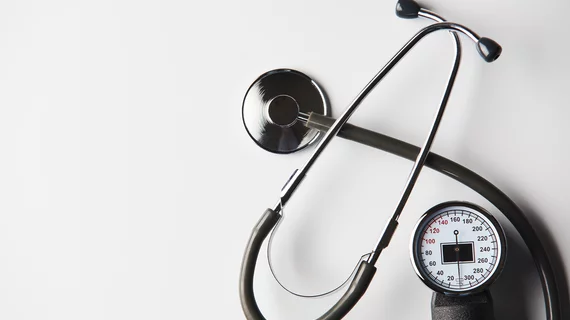At-home BP tests more accurate for black patients
Research out of UT Southwestern Medical Center in Dallas suggests at-home blood pressure monitoring is a more accurate approach to CV risk prediction in black patients.
Black people in the U.S. experience the country’s highest rates of hypertension-related death and disability, Wanpen Vongpatanasin, MD, and colleagues at UT wrote in a Hypertension article published Sept. 16. Since it’s unknown whether out-of-office or clinical BP measurements are better predictors of left ventricular (LV) hypertrophy—a gateway to sudden cardiac arrest, stroke, heart failure and arrhythmias—the team studied data from 1,262 black and 927 white patients in the Dallas Heart Study.
“The debate among cardiologists has been whether measuring blood pressure in the clinic can lead to under-treatment or over-treatment of hypertension,” Vongpatanasin said in a release. “We wanted to see if measuring blood pressure at home would give us a more accurate picture of heart health.”
All participants in the study were between 30 and 64 years old. After adjustment, at-home BP was a stronger predictor of LV hypertrophy than clinically measured BP. Odds ratios per 10 mmHg increase were as follows:
- 1.48 for out-of-office systolic BP
- 1.15 for clinic systolic BP
- 1.71 for out-of-office diastolic BP
- 1.03 for clinic diastolic BP
Black race, treatment status and lower LV ejection fraction were independent determinants of hypertrophy, according to the study.
“Our study shows that African American men and women who are taking medications to control their hypertension should monitor their blood pressure at home on a regular basis,” Vongpatanasin said. “These home-taken readings are a more accurate measure of how healthy the heart is than clinic readings compared to other ethnic groups.”
Vongpatanasin et al.’s study was launched by hypertension expert and UT Southwestern cardiologist Ron Victor, MD, who co-founded the Dallas Heart Study and was well-known for his “barbershop intervention,” which increased rates of BP detection among black men by bringing specialty care to local barbershops. Victor lost his battle with pancreatic cancer last year.
“The Dallas Heart Study is one of the nation’s first major population studies designed to focus on the specific heart disease issues of African Americans,” Robert W. Haley, another co-founder of the Dallas Heart Study, said in the release. “The idea arose from Dr. Victor’s concerns over the disproportionate numbers of young black men and women with advanced heart disease that he treated over the years. Although long recognized, he felt the causes and solutions of their disease were not being addressed.”

